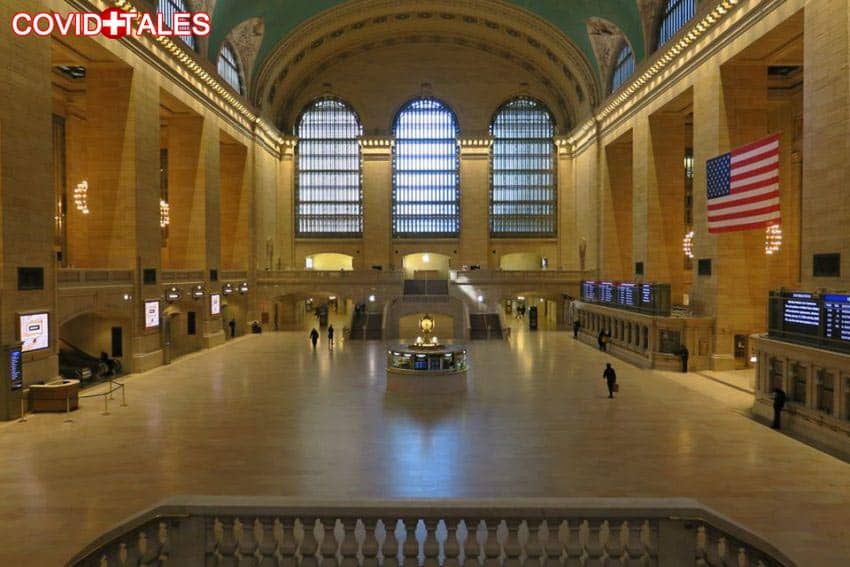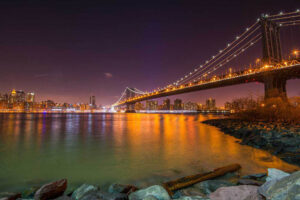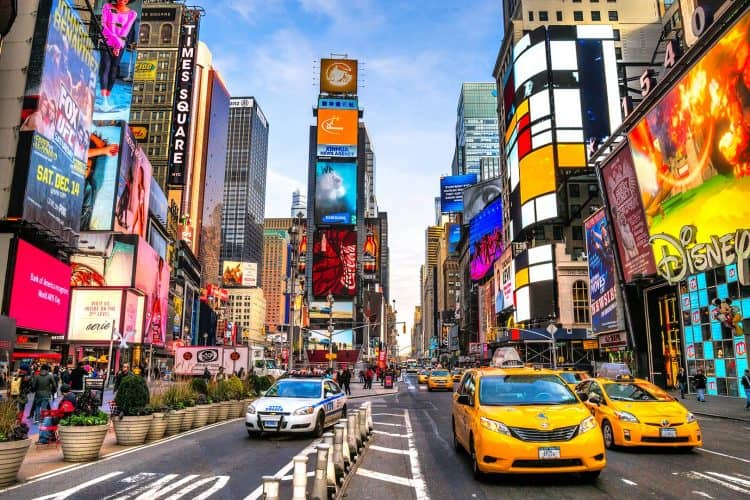By Lisa St. John
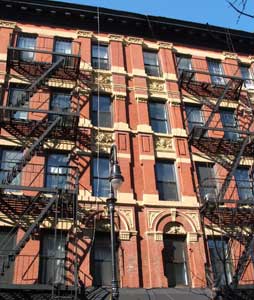
The blaze of the afternoon city sunlight bathes the brownstones in a glow of ruddy orange.
Leaving the American Jewish Historical Society on 16th Street and heading to the Tenement Museum via the best dumpling shop in town, I cannot help but see the Chinese/Hispanic Grocery sign and hear merchants hawking their leather wares in Arabic.
There is a Mexican-American art installation in the windows of 97 Orchard Street across from the historic Americana of the Blue Moon Hotel and there is only one place I can be; the Lower East Side of Manhattan.
The Big Onion
This amalgamation of cultures is one of the most historically interesting neighborhoods in New York City. Inspired by my Stonybrook University course, New York Stories: Literature of the Lower East Side, I took the advice of Professor Eva Gold Bovi PhD and headed down to the southern end of the big onion.
Peeling away layers of history, I find more and more treasures. Before Ellis Island, there was Castle Garden, America’s first immigration center, which now offers a free online database of more than 10 million immigrants who came to the lower east side from 1830 through 1892.
The immigrant experience all began here on the Lower East Side (LES). Now rife with shopping and art, theaters and historical sites, the LES is home to the descendants of European, Russian, Puerto Rican, Chinese and Irish immigrants (to name just a few) as well as native New Yorkers looking for an eclectic lifestyle and community.
Jacob Riis Photos
Searching for a new feeling in a favorite city, I ventured to the LES to see the modern version of what I only knew as Jacob Riis’ images of overcrowded tenements and starving immigrant families. The famous photographer of the WPA (Works Progress Administration) of the 1930s, Riis is best known for his social activism concerning child labor.
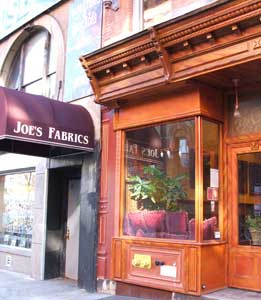
But what was the LES like now? I decided to visit the Lower East Side Tenement Museum to start with the history of this thriving neighborhood. The actual tenement tours take place across the street from the visitor’s center on Orchard Street.
The museum collaborates with local artists to ensure vibrancy in the experience and show respect for the neighborhood.
“A Dictionary of Foreign Time” by Pablo Helguera invited me to ponder the essence of the immigrant experience through his use of language exploring “past and present cultural realities.”
The Lo-down website is a great way to find out what’s happening in this neighborhood as is the LESis another useful site about the Lower East Side.
The Tenement Museum itself has a History Channel video, an array of books on the LES, and a well-stocked gift shop as well as several choices of guided tours (the only way to see the tenement proper).
The educators and volunteers are well-versed in both the history and current events of the LES. Be certain to buy tickets ahead of time, as tours book quickly and there is no guarantee that room will be available if you just walk in. Their online booking is the best way to secure a spot for the particular tour you want. Several of the people I went on tour with were coming back for other tours later in the day.
The “Piecing it Together” tour focuses on the garment industry and the families affected by it. “Getting By” teaches about the development of social welfare, and the “Confino Living History” tour lets us experience the lives of a Sephardic-Jewish family from Kastoria via actors and hands-on activities.
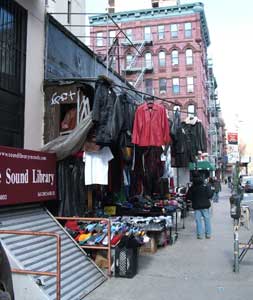
On the tour, you are treated as a newly arrived immigrant by the family as they explain the best ways to “Americanize”. Join local residents in the warmer weather (April through December) as they take you on their “Lower East Side Stories: Walking Tour”. The community of the LES is staunchly proactive in the renovation and revitalization of their neighborhood.
The Lower East Side Business Improvement District offers free Sunday Walking Tours starting at Katz’s Delicatessen (read their world-renown menu at New York Magazine’s Restaurant Guide) on Houston and Ludlow as well as self-guided tours beginning at the Visitor’s Center on Broome Street.
A member of the United Neighborhood Houses organization, the Grand Street Settlement is another example of a neighborhood pulling together for the preservation of its evolving community. Founded in 1916, this American version of the English Settlement Houses of the 1880’s “helps neighbors help themselves” in many ways.
One way to donate—an event I will not miss—is the Taste of the Lower East Side which benefits the youth programs of the Grand Street Settlement.
In the spring, more than thirty restaurants of the Lower East Side and East Village offer tastings of their delectable goods. The fabulous fare, music, raffles, and a silent auction raised over $300,000 last year. I am just waiting for the 2021 date. I’ll be the one bidding on the freestanding wine storage unit and tasting the latkes.
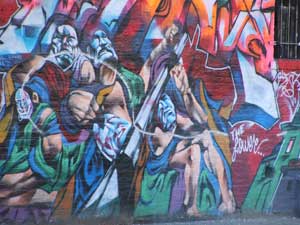
The New York onion comes in even more forms than traditional Jewish delicacies though. First used as a derogatory term in the 1870’s, “The Big Onion” now describes the Lower East Side’s multi-layered ethnicities and cultures.
The Eldridge Street Synagogue’s Moorish exterior is aglow with life as volunteer docents, anxious to share their knowledge, tell tales of the early immigrant experience.
Images of sweatshops and crowded tenements mingle with the modern view from the stairway — a Buddhist temple next to a Chinese storefront, the sound of Latino music erupting from nearby apartments — and the afternoon sun plays tricks on my imagination. Could that be Izzy Gus, a Russian immigrant from 1910 touting his now -famous Guss’ Pickles in a 19th-century pushcart?
Tap into your love for history or your craving for vibrant neighborhoods in New York City’s Lower East Side. The layers continue to peel away every visit. I cannot wait to return. Next time I will certainly return to The Dumpling House (see sidebar) since it was definitely the tastiest way to start peeling away the layers of this Big Onion.
Famous Stops

The American Jewish Historical Society has absorbing exhibits and a plethora of research and education options.
Clinton National Monument, once known as Castle Garden, is a 23-acre waterfront park at the tip of Manhattan. Castle Garden: America’s First Immigration Center
The Lower East Side Tenement Museum is a wealth of information and fascinating guided tours. The website offers virtual tours and links to teacher training and historical data. This is a must-see.
The Lower East Side Business Improvement District is a “non-profit economic development organization created to revitalize the Orchard Street Shopping District while preserving its unique and diverse character. Today, the LESBID is a community of over 400 merchants and property owners managed by a Board of Directors and consisting of local merchants, property owners, residents and elected officials. The LESBID promotes the local businesses, hosts events and provides community beautification services.”
The Museum at Eldridge Street, based in the 1887 Eldridge Street Synagogue, a National Historic Landmark, presents the culture, history and traditions of the great wave of Jewish immigrants to the Lower East Side drawing parallels with the diverse cultural communities that have settled in America.
Tours, exhibits and public and educational programs tell the story of the generations that carried religious and communal customs to a new country and celebrate America’s broad cultural traditions. Combining architecture, history and Jewish culture, a visit to Eldridge Street is a meaningful experience for groups of all backgrounds, ages and interests. (212-219-0302. Open Sunday-Thursday, 10 am to 5 pm. Closed Jewish and major national holidays.)
Jewish Tours of NY in Lower East Side offers tours to restored synagogues and its website has visual exhibitions. 212.374.4100 Email
Big Onion Walking Tours was named “best walking tour in NYC” by New York Magazine. They also have guidebooks available for many New York neighborhoods, including the LES. 212.439.1090 Email
Lodging
The Blue Moon Hotel is a beautifully restored tenement house offering luxurious rooms named after famous celebrities. You can stay in the Tommy Dorsey rooms for as low as $320 or splurge on the Eddie Cantor for $875.
Tel: 212-533-9080
Email
The Inn at Irving Place offers modern comforts yet a guest parlor and sitting room evoke a bygone era in this beautiful brownstone located in Gramercy Park. Rooms range from $415 to $625 per night.
800-645-1447
Email
For more affordable accommodations try:
The Cosmopolitan Hotel. “Clean, comfortable rooms at a reasonable price is the focus of this new, 105-room TriBeCa hideaway where rooms start at $129. Expect simple décor and a perfect location for walking to SoHo, Chinatown, Little Italy and Greenwich Village” (USA Today).
888-895-9400
Email

Lisa St. John is a high school English teacher and published poet. From renting houses in San Miguel de Allende to taking cruises in the Galapagos Islands, Lisa lives by Baudelaire’s idea to “Always be a poet, even in prose.”
- These 9 U.S. National Parks Require Reservations in 2024 - April 17, 2024
- Take a Hike in Olympic National Park - April 17, 2024
- The Wild Mississippi: 2340 Miles Across Ten States - April 8, 2024


